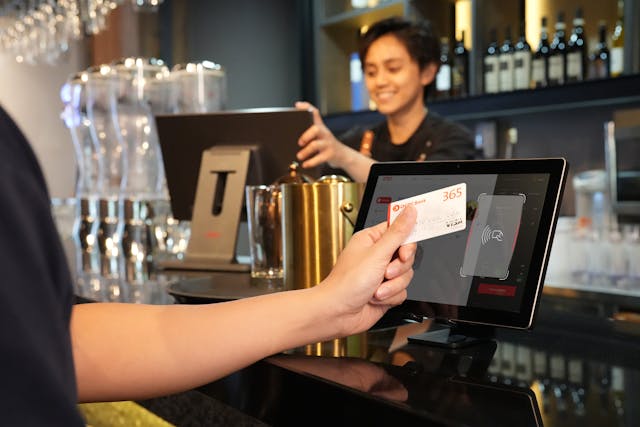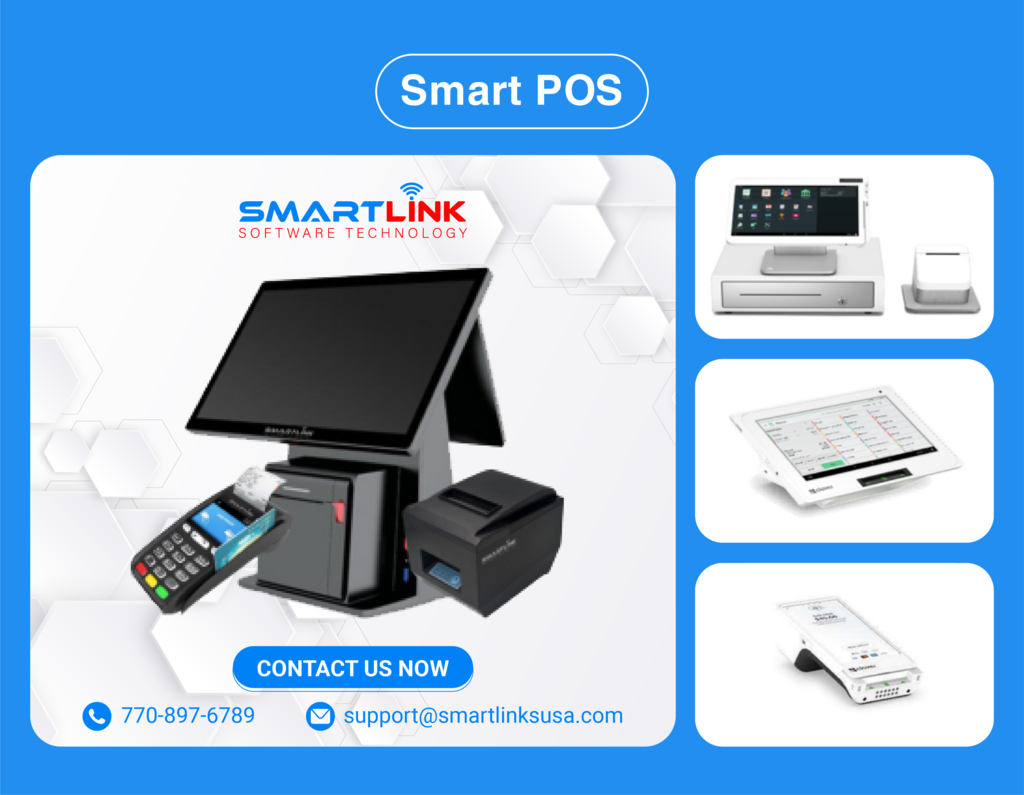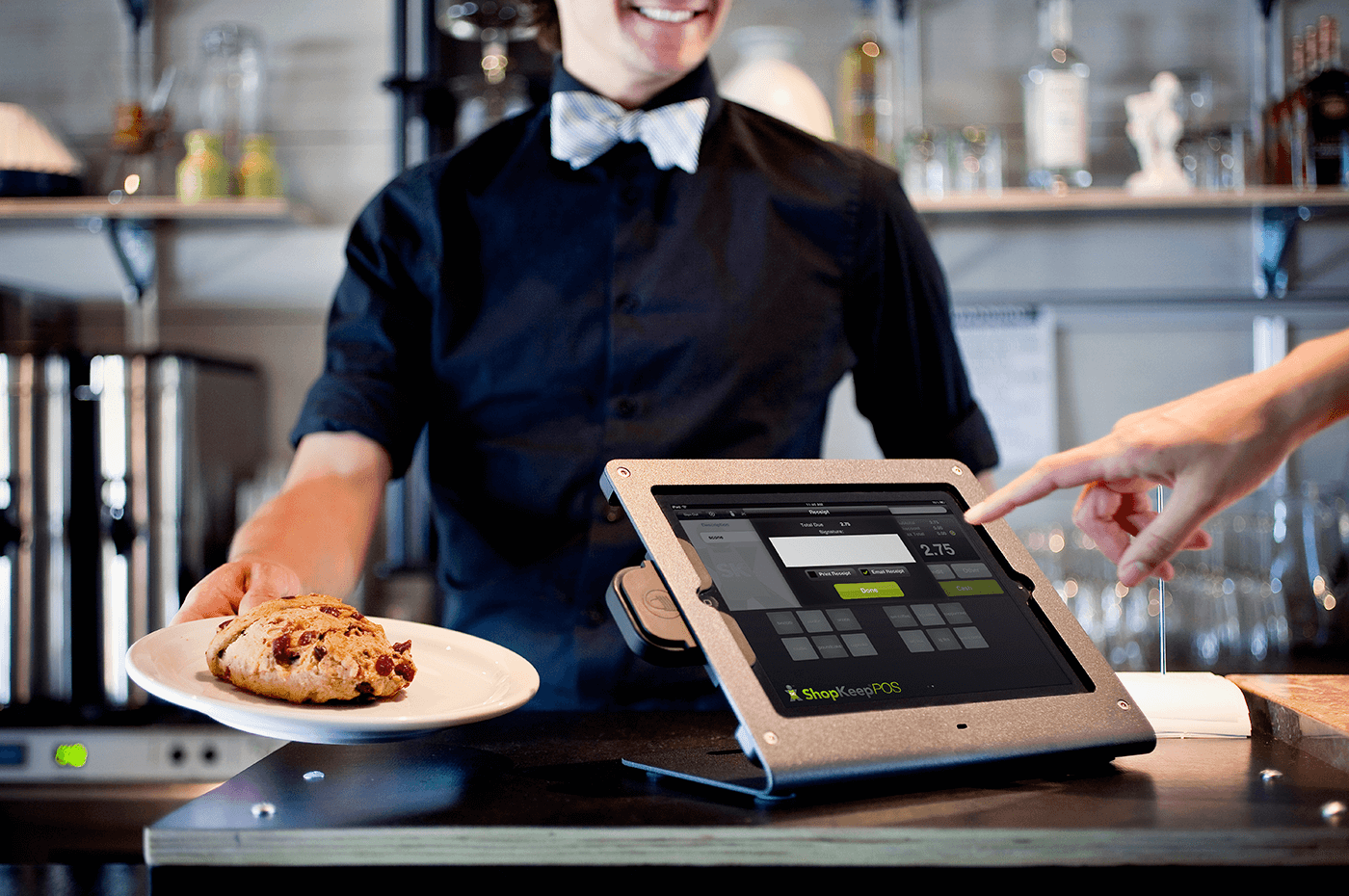Regarded as a significant advancement in sales management and customer service, dual-screen POS systems offer a range of benefits for businesses. This article explores dual-screen POS systems and explains why they have become essential tools in boosting business efficiency.
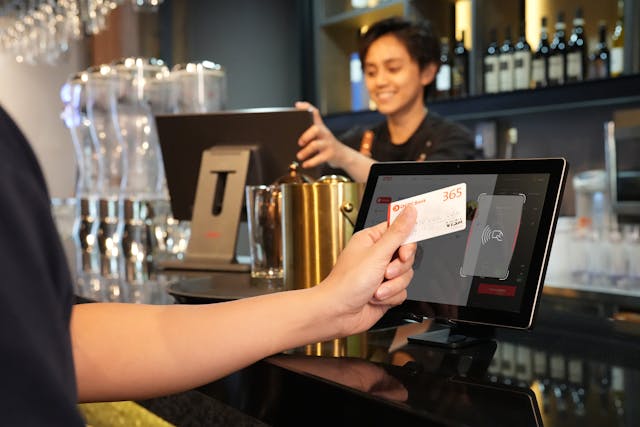
1. Overview of dual-screen pos systems
A dual-screen POS system is a sales-support device designed with two screens: a primary screen for employee operations and an additional customer-facing screen.
The primary screen displays order details, inventory, and management functions, while the customer screen enables customers to view product lists, prices, and order details. This structure allows stores, restaurants, and nail salons to operate more smoothly and enhances customer interaction, contributing to a more professional sales process. This improved interaction lays the foundation for better customer experiences.
In a competitive business environment, dual-screen POS systems have become an intelligent choice for optimizing work efficiency and meeting customers' increasing demands.
2. Key features of dual-screen pos systems
2.1. Independent dual screens
As the name suggests, dual-screen POS systems feature two independent screens that integrate seamlessly.
The primary screen allows employees to perform sales tasks and manage data efficiently. Meanwhile, the customer-facing screen enables customers to verify their orders and make direct payments without needing paper receipts.
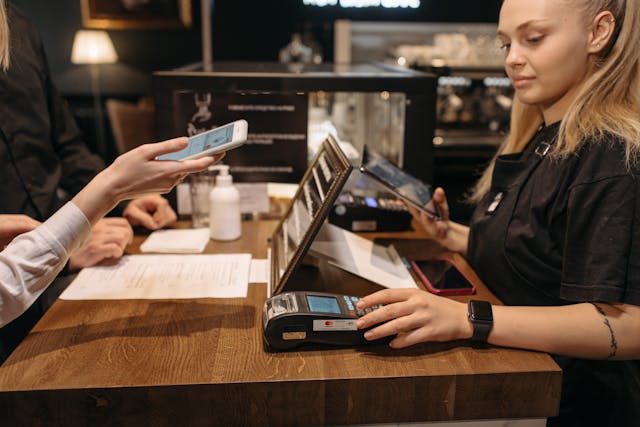
2.2. Enhanced customer interaction
With the additional customer-facing screen, order and payment information is readily available. Customers can easily view invoices, place orders, make payments, and provide feedback, creating convenience and making them feel valued.
2.3. Integrated product advertising
In addition to streamlining the payment process, the customer screen can display promotional programs, new products, or active offers, serving as a direct marketing tool to engage customers at the point of sale. This setup encourages customers to make quick purchasing decisions.
3. Main functions of dual-screen pos systems
3.1. Responsive Touchscreen
Dual-screen POS systems often feature responsive touchscreens with high accuracy, allowing employees to operate efficiently. These screens, typically ranging from 10 to 15 inches, are sized appropriately for clear information display.
3.2. Automatic receipt printing
Many dual-screen POS models integrate built-in receipt printers. After customers confirm orders on the secondary screen, receipts are automatically printed, accelerating the checkout process and saving time.
3.3. Inventory management
Like other POS systems, dual-screen models are equipped with inventory management functions. This allows managers to track and monitor stock levels. When products run low, the system can send alerts, enabling timely restocking.
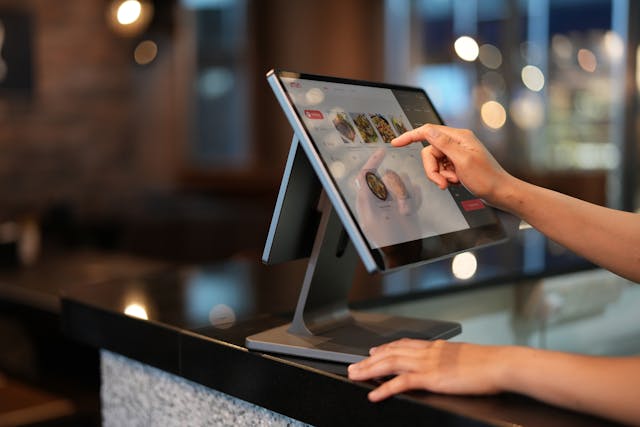
3.4. Sales reporting
Dual-screen POS systems support real-time sales data analysis and reporting, allowing store owners to monitor revenue, best-selling items, and consumer trends, useful for creating long-term business strategies.
3.5. Contactless payment integration
Meeting modern payment needs, dual-screen POS systems often support contactless payment options like NFC cards, QR codes, or digital wallets. This reduces checkout times and offers flexibility to customers.
4. Benefits of dual-screen pos systems for restaurants and nail salons
4.1. Accelerated transactions
The dual-screen setup enables both employees and customers to complete transactions quickly, reducing wait times, optimizing processes, and improving productivity.
4.2. Enhanced customer experience
The secondary screen provides clear information, allowing customers to view and confirm items easily. Additionally, customer-facing payments offer a sense of autonomy and convenience.
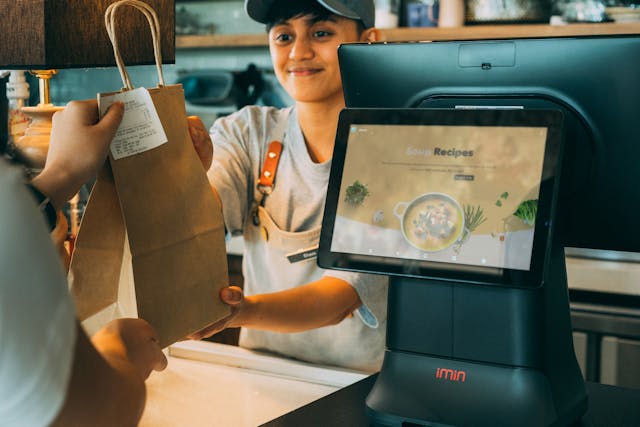
4.3. Increased professionalism
Using a dual-screen POS system creates a modern and professional impression, enhancing the brand image and customer trust in the service.
4.4. Revenue boost
With direct advertising on the customer screen, promotions and new products are visible to customers during checkout, increasing upselling opportunities and driving revenue.
5. Criteria for choosing a quality dual-screen pos system
5.1. Screen size and resolution
The size and resolution of the screens play a vital role in clear information display. High-resolution, appropriately-sized screens improve customer visibility and ease of use.
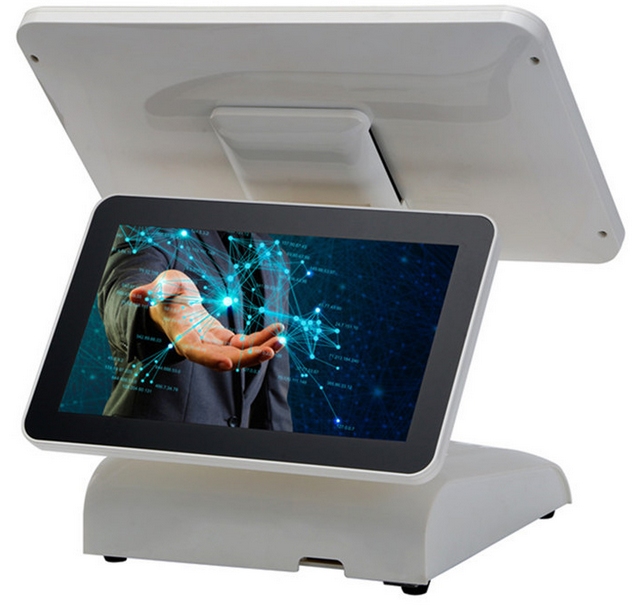
5.2. Software compatibility
A dual-screen POS system must be compatible with sales management software and able to integrate with the store’s existing systems for synchronization and convenience.
5.3. Security features
Security is essential, especially in storing and processing payment information. Choosing a POS system with robust security features minimizes data loss risks.
5.4. Durability and maintenance
For long-lasting performance, prioritize systems with high durability and ease of maintenance. This saves costs and ensures stable operation.
Conclusion
Dual-screen POS systems not only optimize sales processes and data management but also serve as crucial tools in enhancing customer experience. With advantages such as fast transactions, in-store product promotion, and a high level of professionalism, dual-screen POS systems are a top choice for stores, restaurants, and nail salons. For the best results, businesses should consider models that match their scale and needs, ensuring stable and effective performance over time.
